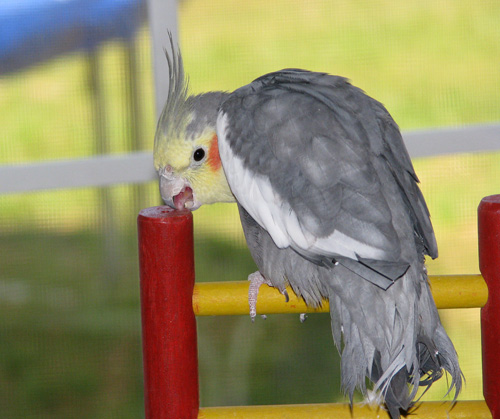Tips for Training Your Bird
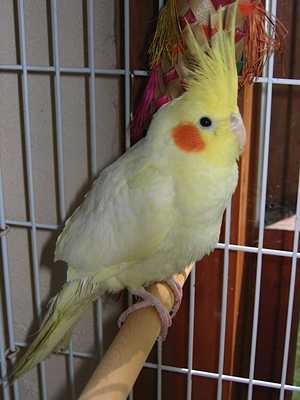
To stop biting:
- do not have a strong reaction
- do not let him think he's the boss
- teach him commands that will save your fingers and eliminate biting
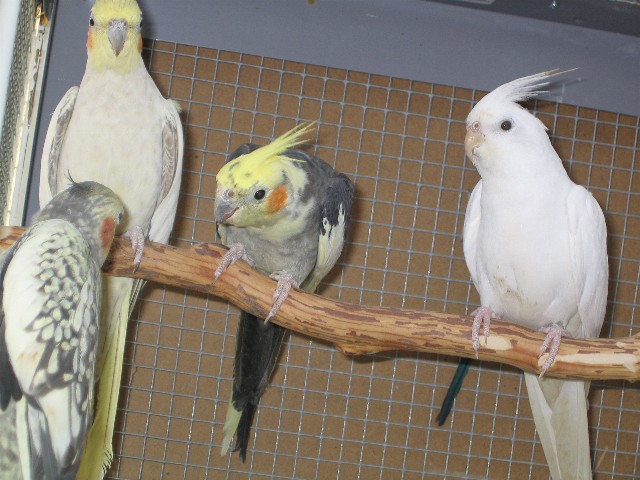
To stop screaming, prevent:
- boredom
- loneliness
- frustration
- stress
- fatigue
- poor diet
To stop plucking feathers:
- rule out any health issues
- require patience and kindness
- regular training
- provide an optimal environment
- commit to 30 days of training sessions
To Come to You:
- make sure that his wings are clipped
- place him somewhere that allows him to easily
walk over to you
- tell him to "Come" in a firm, pleasant voice
- reward him for his good behaviors, but never
praise your cockatiel until it does what you are asking
- soon it will be coming over to you on command!
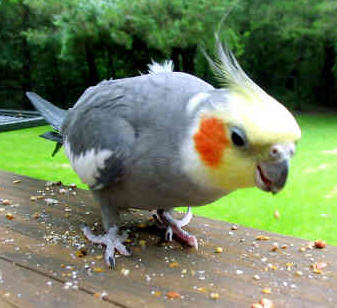
The Up command:
- Get your cockatiel out of the cage,
you can use the "up" command for this.
- Take him to a neutral space, out of
sight of his cage; and put him down on a hard surface.
- Use one hand to guide your bird from behind
and press the index finger of the other
into the birds chest.
- Push your bird up gently from behind,
so that it perches on your index finger.
- Have patience and faith that he will learn!
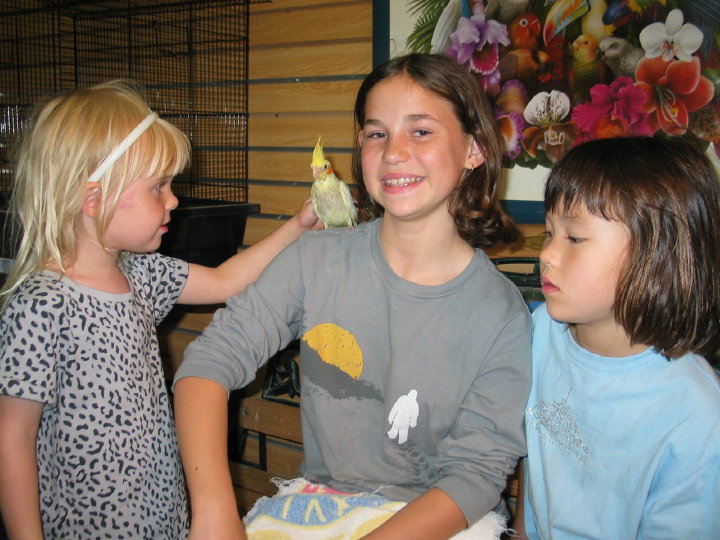
How to talk:
- Decide on a schedule to teach your pet cockatiel.
- Prepare to devote at least four 10-minute sessions a day
- Take your pet cockatiel out of its cage. Make sure that your pet cockatiel can clearly see your lips and hear your words.
- Repeating one simple word (one syllable) to your bird. Repeat the word throughout the duration of the sessions.
- Give your pet cockatiel a treat every time it shows an interest in the words you speak and the sounds you make.
- Repeat the words in a sing-song or high-pitched tone.
- Listen to your pet cockatiel. Reward him for trying.
